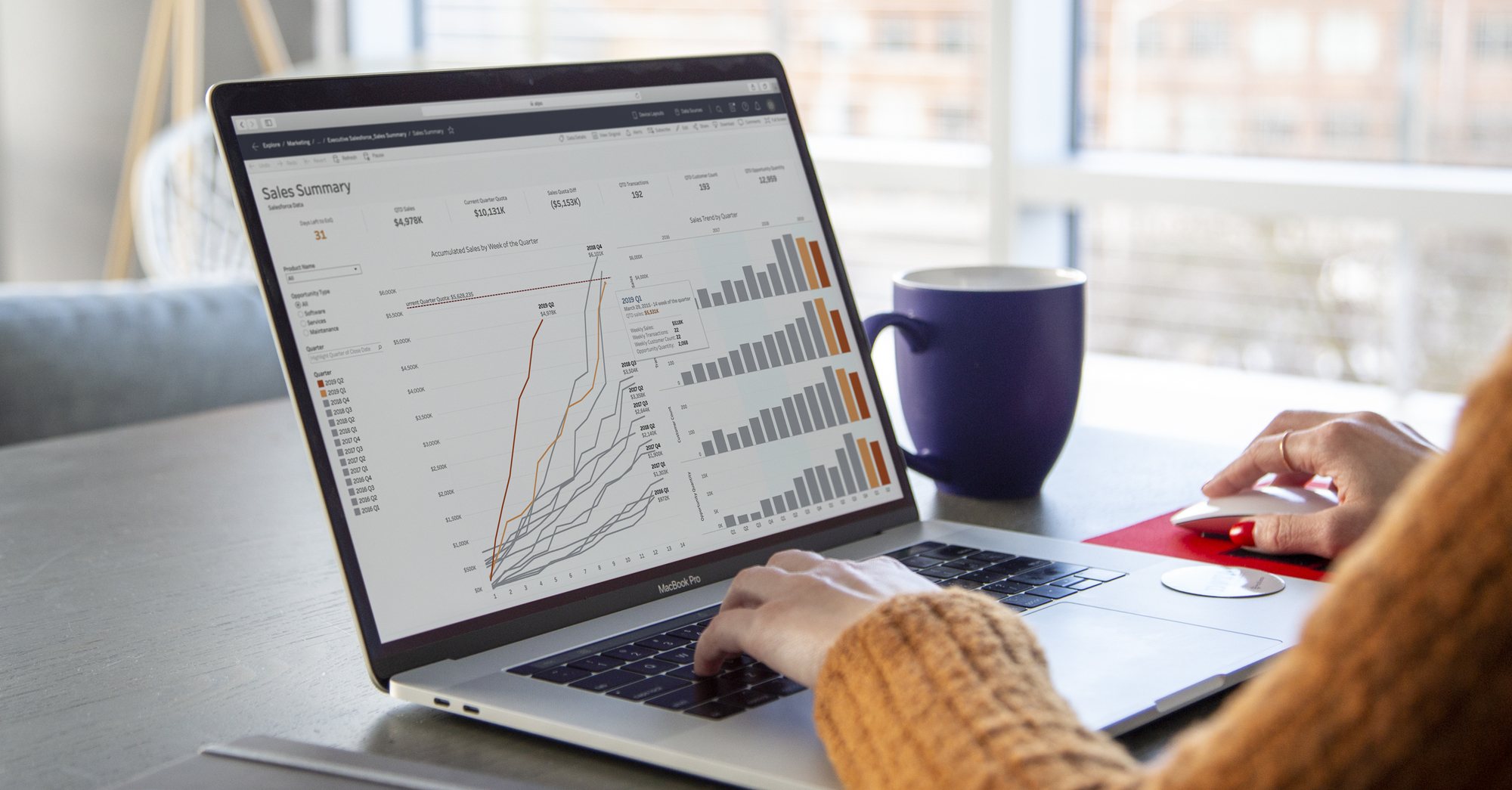
Tableau enables the BMW Group Germany to improve performance across its wholesale and retail business
Single automated dashboard used to track KPIs at senior executive level
Consolidation of 60+ data sources creates 360 degree data transparency
Tableau driving long-lasting cultural change throughout workforce
The BMW brand is synonymous with automotive engineering excellence. Car enthusiasts and commuters around the world covet the famous blue and white badge as a symbol of luxury and quality. Each year, the company produces 2.5 million vehicles, making it one of the largest commercial enterprises in Germany.
At its national wholesale and retail business in Germany, Tableau is used to inform sales and marketing strategies, drive conversations with dealerships and exceed KPIs at both national and regional levels. Here, Saagar Weth, Data Analytics Team Leader at the BMW Group Germany, discusses the critical importance of data consistency across the enterprise and how the introduction of Tableau transformed the way employees work with data every day.
Tableau enables employees to find insights whenever required and analyse the exact same information as everyone else, displayed in a series of well governed, highly visual dashboards. As a result, data throughout the business is more consistent.
What data challenges were you facing at BMW Group Germany before Tableau?
We work with many different data sources and multiple databases, as well as in-house systems. Before Tableau it was more complicated to collate, analyse and visualise information from these different data sources effectively. Employees were conducting their own siloed analytics and reporting, which could sometimes lead to data discrepancies.
For this reason, two years ago our senior leadership team decided to create a new way of working, unifying all of these disparate data systems through a single intuitive analytics platform. One that not only supported a 360 degree view and data driven decision making, but also enabled cross functional synergies between different teams within the company, helping them to collaborate more effectively.
How did you implement this new way of working?
The back-end infrastructure was super important, and we spent a lot of time getting this right. Tableau was installed as the overarching visual analytics solution, linking everything together.
Tableau enables employees to find insights whenever required and analyse the exact same information as everyone else, displayed in a series of well governed, highly visual dashboards. As a result, data throughout the business is more consistent.
Questions can be asked and answered on the spot during meetings, instead of taken away to be answered later. It completely changes the dynamic of these meetings - where conversation focuses on why something is happening, not what.
What features made Tableau your visual analytics solution of choice?
Tableau’s automation features were key for us. Once a dashboard has been created, it never needs to be manually updated again. New data is automatically pulled from different data sources, which means users can always analyse the latest information whenever they open it up. Aspects like KPI report building now works much faster. We now have more time to build and implement new data strategies, ask questions, and discover important new insights that would otherwise have remained hidden.
Ease of use was also a big factor. Tableau enables people without a data background to pick it up very quickly and we get a lot of comments about how clean the dashboards look, which makes analysis extremely simple and intuitive to perform.
Can you share an example of how Tableau is transforming the way you work?
Like every leadership team, our senior executives need to closely track KPIs. Now, KPIs are contained in a single automated dashboard that allows them to drill down into any measure they like, by car model, sales period, region and more, with outliers automatically highlighted in red.
Using dynamic filtering in Tableau rather than static tables and charts means that questions can be asked and answered on the spot during meetings, instead of taken away to be answered later. It completely changes the dynamic of these meetings - where conversation focuses on why something is happening, not what.
This leads to better, more informed decision making, and much faster business response to market trends and challenges, which is critical in the current climate.
[We can] pinpoint where our best performing dealers are and understand the key factors in their success. We can then share this knowledge with other dealers on an aggregated regional and sub-regional level, in order to help them improve their performance as well.
What impact has this had on the perception of data across BMW Group Germany’s operations?
It’s had a massive impact. In less than two years, Tableau usage has grown from nothing to more than 60 percent of our workforce in Germany.
Furthermore, the insights generated are being used to make better decisions at every level of the enterprise, as well as spark new conversations with our dealers. For example, we’ve recently created a dealer steering dashboard in Tableau based on peer to peer performance in different regional markets across Germany. This helps us pinpoint where our best performing dealers are and understand the key factors in their success. We can then share this knowledge with other dealers on an aggregated regional and sub-regional level, in order to help them improve their performance as well.
Do you have any advice for others looking to transform the way they work with data?
Analysing data is imperative to any forward-thinking business, but without a coherent data strategy, you can quickly get lost. Tableau can assist and support you in your data transformation efforts, which makes it so important. It’s both easy to use and provides deep insights. These benefits, combined with invaluable automation features, will quickly set you on the path towards becoming a fully data driven business.
